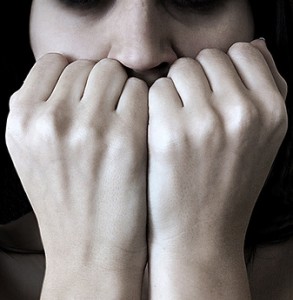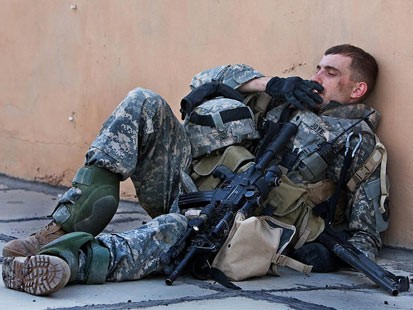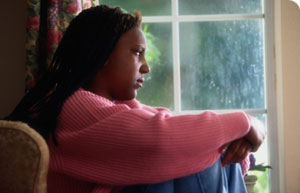Everyone experiences anxiety from time to time. Different types of anxiety disorders, each present in their own unique circumstances. Some anxiety can be useful and can motivate you, as in preparing for an exam or giving a public lecture. However, anxiety becomes a problem when it disrupts your life. This is the time to seek professional help.
If you’re suffering from anxiety, you’re not alone. Millions of people worldwide are affected by anxiety. It is both a physical as well as a mental disorder.
Physical symptoms of anxiety can include:
- Rapid heartbeat resulting in a fear of having a heart attack. Many an anxiety sufferer has landed up in the doctors room for an ECG only to be told that the heart is well and anxiety is the problem.
- Trembling and sweating
- Nausea and dizziness
- Chest pain and headaches
- Weakness in the limbs and muscle tension
- Some of the less common physical symptoms can include a feeling of choking and being unable to speak, and rashes. Being unable to speak is interesting. For many anxiety sufferers an underlying belief is that they have no right to express their needs or feelings. And so when they try to speak up, the throat closes up, confirming the underlying belief.
6 TYPES OF ANXIETY DISORDERS
1. GENERALIZED ANXIETY DISORDER (GAD)

GAD, is the most common and widespread type of anxiety. Characteristically GAD sufferers have relentless, unspecified worry about everyday things. The person with GAD expects the worst to happen, believes this expectation to be true and then acts upon this belief, by avoiding whatever provokes the anxiety. Chronic worry affects every aspect of life.
Physical Symptoms of GAD include:
- insomnia
- muscle tension,
- irritability
Problems associated with GAD are:
- constant restlessness and feeling on edge.
- feeling of being without control
- low energy levels and tiredness
- tense back, neck and shoulder muscles
- difficulty concentrating or focusing on a task
- obsessing over negative and anxiety causing thoughts. Magnifying small events out of all proportion.
GAD is also common among people with panic disorders and obsessive compulsive disorders.
2. PHOBIAS

A phobia is an intense fear of something that really doesn’t pose a real or immediate danger. Common phobias include a fear of spiders (arachnophobia), snakes, thunderstorms, blood and airplanes. The fear far exceeds the actual danger and people who struggle with this type of anxiety disorder often feel embarrassed, knowing that their
fear is excessive.
Phobias generally bring about ‘disaster thinking’, predicting that the worst. Avoidance
is the most common way of dealing with a phobia. However, avoidance is a bad idea as it actually maintains the phobia, it feeds the phobia. The phobia doesn’t go away.
At times the phobia may have no affect on your life. Having a fear of sharks is really not
going to harm you if you live no where near the sea. Sometimes the phobia is small and manageable, not really affecting your day-to-day living.
On the other hand a phobia can badly affect your life. I remember a dinner guest who giving me quite a shock. Our cat walked into the dining room to which my friend let out a little squeal, jumped up and ran to the wall. She stayed glued to the wall, watching every move of the cat, until I removed the cat from the room. Only then could I see a
visible sign of relief.
Phobias commonly cause:
- an excessive, non-stop fear of a specific situation or event
- inability to control your fears, even when logic tells you they’re irrational
- an immediate feeling of terror when facing the subject of your phobia
- doing all you can to avoid the situation or object that causes you fear
- normal daily routine to be disrupted because of your fears
- for some people just the thought of the object they fear, can cause stress.
3. SOCIAL ANXIETY DISORDER

Social Anxiety Disorder is an irrational fear of social situations where unfamiliar people or unfamiliar situations are likely to be encountered. People who battle with social anxiety feel extremely self-conscious and are afraid in social situations. Socializing with new people, and speaking in public can evoke enormous anxiety. Even thinking about it
can evoke extreme anxiety.
People with social anxiety fear being judged or remarked on. This can result in acute self-consciousness and fear of doing something ‘stupid’ in front of others. For example dinner invitations might be refused because of the fear of unintentionally shooting a few peas across the table or dropping some food on the floor. This type of
situation would be ‘disastrous’ for a person with Social Anxiety Disorder.
Meeting new people can be very difficult as well as ‘speaking up’ in company. The coping mechanism is avoidance which gives the illusion of solving the problem. However, avoidance only maintains the anxiety and the problem remains.
Many people experience a degree of shyness in the company of strangers, but if the
fear dominates your life, you could be suffering from social phobia.
4. OBSESSIVE COMPULSIVE DISORDER (OCD)

OCD is a very destructive anxiety disorder characterized by recurring, persistent thoughts, images, and impulses. It is marked by repetitive behaviors such as checking a certain number of times to make sure the stove/iron etc. is turned off. Compulsive washing of hands is another common OCD. Focusing on these actions deflects the anxiety provoking thoughts or images.
Compulsions and obsessions are similar, but manifest differently:
- Obsessions are thought based. They’re a preoccupation with a specific thought, usually a negative or fearful thought, that a person simply cannot shake off no matter how hard they try.
- Compulsions are behavior based. There’s a “need” to perform an action or activity, often in a very specific way. As hard as the person tries, they can’t stop themselves from performing the behavior.
- Compulsions can be linked with obsessions. For example an obsession (thought) could be a fear of germs. A compulsion (behavior) could be a need to wash your hands a certain number of times. The person then links the two having to wash their hands to get rid of the germs.
5. POST-TRAUMATIC STRESS DISORDER (PTSD)

Post-traumatic stress disorder is an anxiety disorder that arises after a terrifying event that could have put your life in danger. It can arise from a physical trauma or an emotional trauma. After World War II many soldiers were diagnosed with “shell-shock”, a diagnosis which is now referred to as Post-Traumatic Stress Disorder.
PTSD can result from a natural disaster, a terrorist event, death of a loved one, or a violent personal assault.
Symptoms include:
- Reliving the Trauma through nightmares and flashbacks
- Responding to Triggers . Sometimes a noise or a situation can trigger a reaction. Many an ex-serviceman will hear a vehicle back-fire and dive for cover under the dining room table. The noise triggers off the reaction. If the PTSD is a result of being attacked, say from behind, a person (even a loved one) standing behind you could elicit the fear response.
- Severe depression and anxiety
- Emotional Struggles. Many people with PTSD experience feelings of disinterest, or detachment from people, while others become emotionally numb.
- “Disaster thinking” is common resulting in avoiding events that could remind the person of the traumatic event.
- Easily startled and difficulty in sleeping
People with PTSD are more vulnerable to being badly affected by daily stress, resulting in a tendency to be short tempered and easily angered.
It is essential for a person with PTSD to get professional help. Anyone who has experienced a trauma should get trauma counselling as soon as possible, to avoid the development of the more serious PTSD.
Related posts
Surviving Trauma
12 Strategies for coping with Trauma
6. PANIC DISORDER

Panic attacks can be a part of a panic disorder. Panic attacks are a fear reaction to a situation where no real danger exists, except in the person’s mind.
Physical symptoms include:
- Rapid heartbeat resulting in the fear of an impending heart attack. The feelings are intense and frightening.
- Excessive sweating or hot/cold flushes
- Tingling sensations, numbness, or weakness in the body
- Depersonalization (feeling like you’re outside your body)
- Trouble breathing
- Lightheadedness or dizziness
- Chest pain or stomach pain
- Digestive problems and/or discomfort.
“Mental” Symptoms include
- Feeling of doom, or the feeling as though you’re about to die
- Severe anxiety, especially health anxiety
- Feeling of helplessness, or feeling like you’re no longer yourself.
These symptoms usually peak at about 10 minutes into a panic attack.
It’s very important to learn to recognize a panic attack and learn to stop its progression. If left untreated a secondary disorder can develop, namely the fear of a possible panic attack.
7. AGORAPHOBIA

Agoraphobia is the fear of going out in public. It can involve a fear of open spaces or the fear of being in unfamiliar places. The person with agoraphobia becomes housebound and avoids travelling to unfamiliar places. Facing unfamiliar places can result in debilitating fear.
Agoraphobia can be caused by panic attacks that have been left untreated. Experiencing a panic attack in a public place, can lead to an association between panic attacks and public places. To avoid the panic attack the person stays at home.
Agoraphobia can also result from a traumatic event outside of the home. Many people experience times when they feel vulnerable outside of their homes and then prefer to remain indoors. However if the fear is holding you back from enjoying life, you could have agoraphobia.
Getting Help:
If you recognize any of these symptoms in yourself seek out professional services for a proper diagnosis. Anxiety can be treated by the use of medication as well as cognitive therapy. You have to make a step-by-step plan for facing your fears. That is the only way they will be overcome.
Related posts:
Facing your giants – a story
3 Step Relaxation Technique
Tips for Overcoming Anxiety
Is depression a physical illness?
First Aid for Panic Attacks
5 Common Myths about Panic Attacks